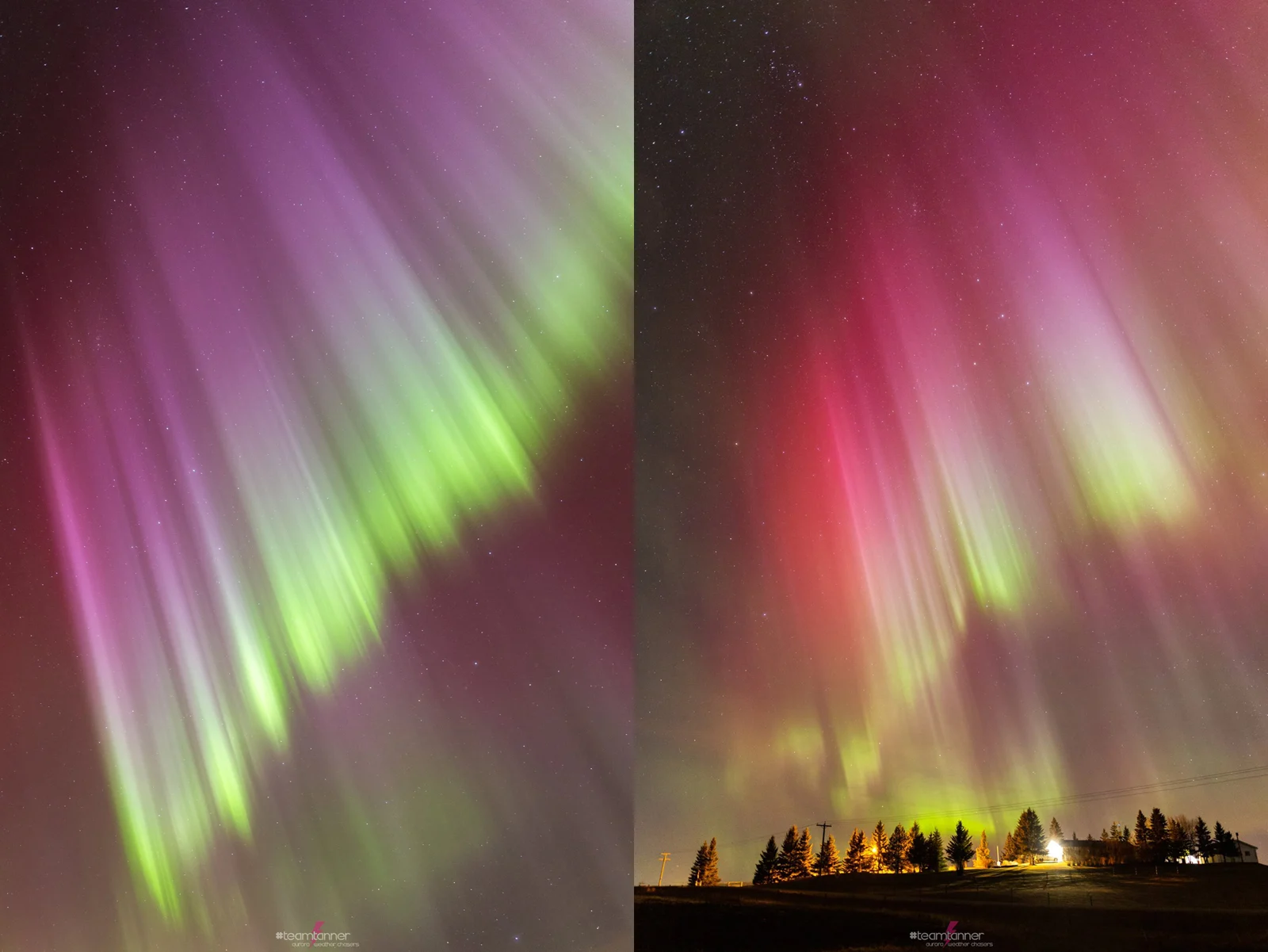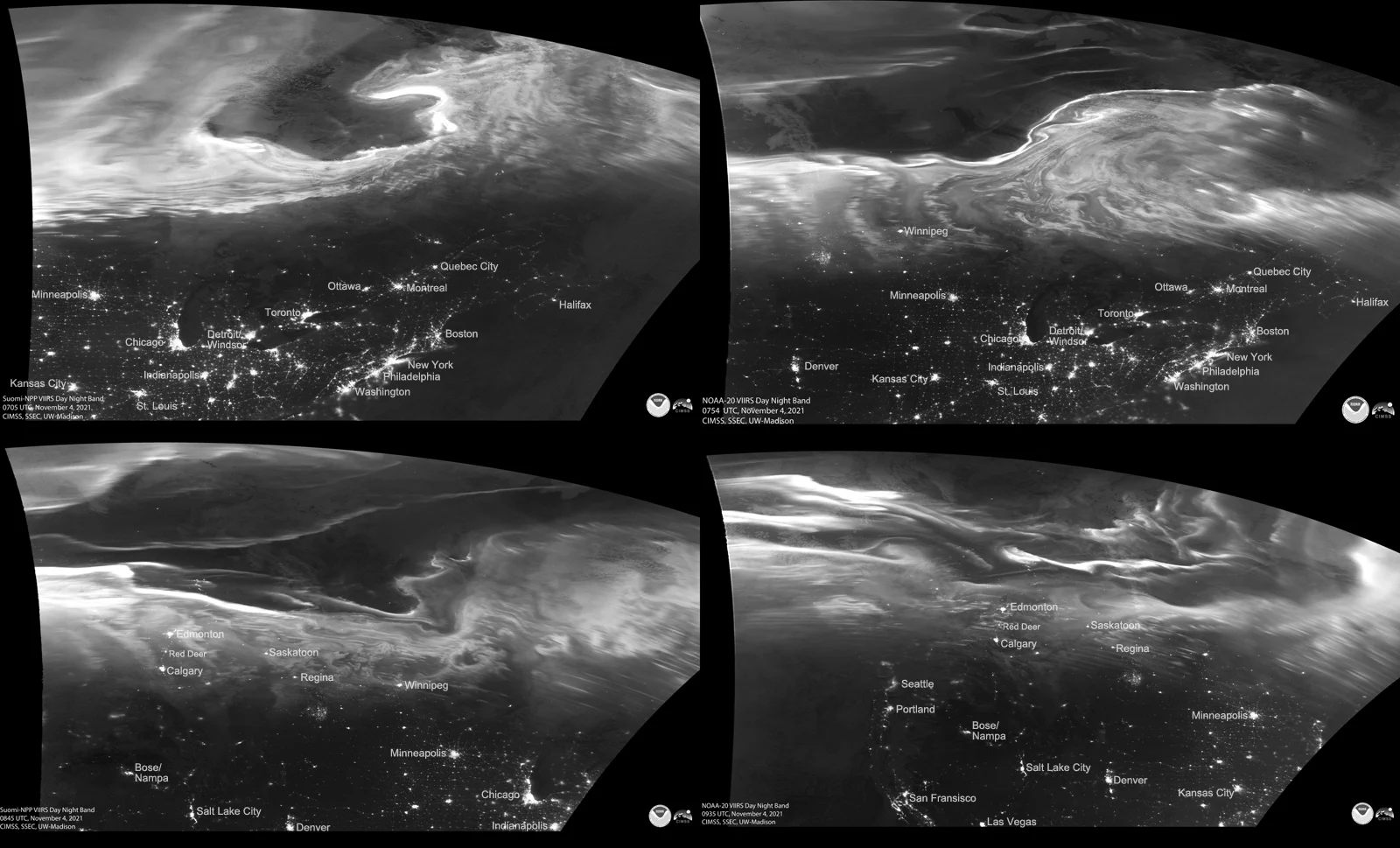
PHOTOS: The Northern Lights put on a brilliant display across Canada last night
These auroras were so intense, witnesses said they rivaled those seen during the 2015 St. Patrick's Day solar storm!
Skywatchers were awarded with a spectacular sight above Canada on Wednesday night, as brilliant displays of the Aurora Borealis stretched across the country, and even made a rare visit to southern Ontario.
The Halloween solar storm was a bust over the weekend, resulting in plenty of disappointment among aurora chasers. However, some intense solar activity from the first two days of November more than made up for that disappointment.

The two pictures shown here are just a sample of what the Northern Lights looked like from Alix, AB, early in the morning on November 4, 2021. Credit: TeamTanner on FB - Tree Tanner (Twitter & IG), Dar Tanner (Twitter & IG
Thanks to the arrival of a fast-moving solar storm that erupted on Tuesday, the Northern Lights put on an intense show in the sky Wednesday night. According to Tree and Dar Tanner, who chase and photograph auroras from central Alberta, the display rivaled anything seen since the St. Patrick's Day solar storm of March 2015.

Another picture taken by the Tanners on Wednesday night, this one highlighting the intense red colour of the auroras. Credit: TeamTanner
This rare display of the auroras was due to a strong 'G3' geomagnetic storm — a disturbance in Earth's geomagnetic field that resulted from a cloud of charged solar particles (known as a coronal mass ejection or CME) passing by Earth. This 'solar storm', as they are sometimes called, erupted from an active sunspot region following a moderate M1.7-class solar flare on Tuesday.
After overtaking and absorbing a previous, slower-moving CME from Monday, this 'cannibal' solar storm swept by us on Wednesday. As the immense magnetically-charged cloud enveloped us, Earth's geomagnetic field became energized as a result, trapping particles from within the cloud and funnelling them down towards the planet's poles. As these particles dove into the atmosphere, they smacked into atoms and molecules of oxygen and nitrogen, energizing them and causing them to emit light in the form of the auroras.
While these auroras were visible as far south as southern Ontario in the east, some viewers in the western half of North America saw it from much farther away.
According to Spaceweather.com, they were seen as far south as Joshua Tree, California, likely owing to the region's high altitude (2,700 ft above sea level).
"I could not see them with my naked eye," observer Don Davis told spaceweather.com, "but my camera recorded these rare SoCal auroras."
The view from space, as imaged by the NOAA-20 polar-orbiting satellite, revealed the full extent of the auroras on Wednesday night.

These four images were captured by the VIIRS instrument's Day Night Band, on board the NOAA-20 satellite, between 7:05 and 9:35 UTC on November 4, 2021. Credit: CIMSS/SSEC/UW Madison
Below is a selection of visuals of Wednesday night's vibrant auroras currently making the rounds on social media.
Watch Below: Chris St Clair talks to science writer Scott Sutherland about the Sun, CMEs, geomagnetic storms, and the Northern Lights
Thumbnail courtesy of TeamTanner
